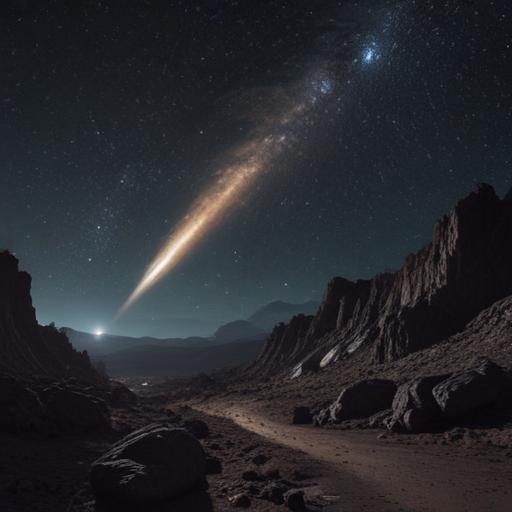A comet designated as 3I/ATLAS has generated buzz recently, confirmed earlier this July to be of interstellar origin, making it one of only three identified interstellar objects discovered near Earth. It is estimated to be over 12 miles wide and currently traveling at approximately 37 miles per second relative to the Sun. On October 30, 2023, 3I/ATLAS is expected to approach within 130 million miles of our planet.
Initially detected by a Chilean telescope, part of the NASA-funded Asteroid Terrestrial-impact Last Alert System (ATLAS), the object was observed as an unidentified asteroid before follow-up verification established its cometary nature. However, speculation arises regarding its true composition. A trio of researchers, including Harvard astrophysicist Avi Loeb, have proposed the idea that 3I/ATLAS could be alien technology rather than just a typical icy comet.
Loeb, known for his unconventional theories about extraterrestrial artifacts, suggests that 3I/ATLAS could represent “hostile” alien technology. While this notion is speculative and not widely embraced by his peers, Loeb maintains that it is valuable to explore such ideas. He clarified in a blog post that the hypothesis is more of an engaging thought experiment rather than a definitive conclusion, emphasizing that the most probable identity of 3I/ATLAS remains that of a natural interstellar comet.
This is not the first time Loeb has gauged extraterrestrial possibilities; he previously made headlines in August 2023 after analyzing remnants of a meteor he believes to have interstellar origins. Furthermore, he has speculated that the comet Oumuamua, the first interstellar object identified in 2017, may have been propelled by solar winds as a sort of “light sail,” suggesting it could have been an alien craft.
While some experts have dismissed Loeb’s assertions, citing the rigorous scientific work being conducted to understand these celestial objects, the discussions surrounding 3I/ATLAS pique public interest and encourage curiosity about our universe. Whether 3I/ATLAS is an icy comet, an ancient visitor, or something more extraordinary, it serves as a reminder of the vast, unexplored territories of our cosmic neighborhood.
In light of ongoing discoveries, there’s a sense of hope that our understanding of the universe will continue to expand, shedding light on our place within it. The quest for knowledge about interstellar objects not only fuels scientific inquiry but also ignites the imagination of countless individuals eager for the mysteries of the cosmos to unfold.
